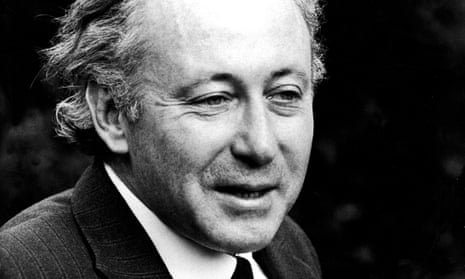Zhores Medvedev, who has died aged 93, was an outstanding geneticist and microbiologist. In 1970, after using underground publications to denounce political repression and the manipulation of science in the Soviet Union, he was forcibly detained in a psychiatric hospital. Other leading critics of the system, the physicist Andrei Sakharov and the writer Aleksandr Solzhenitsyn, as well as western colleagues, protested strongly and Medvedev was released after 19 days.
Emboldened, he promptly co-authored, along with his twin brother, Roy, a dissident historian, A Question of Madness, an account of how such hospitals were being used to silence dozens of critics of the political system. The book was published in the US and Britain in 1971.
The Soviet authorities then switched to the technique of exile. Medvedev had repeatedly been invited to lecture abroad but no permission had been given for him to go until 1973, when he was allowed to accept a year-long research post at the National Institute for Medical Research in north London. Shortly after his arrival he was summoned to the Soviet embassy and told his citizenship had been withdrawn.
Medvedev continued working in the department of genetics at the institute until he retired in 1991 but also found time to write several books. In Nuclear Disaster in the Urals, published in the UK in 1979, Zhores revealed a previously unknown nuclear explosion in which several hundred people had died in 1957. The disaster was officially suppressed but confirmed after the Soviet system collapsed.
Medvedev wrote about the 1986 Chernobyl reactor explosion, which he said was inevitable, given the poor state of Soviet design and engineering. He also wrote an important book on Soviet agriculture as well as biographies of two of the last Soviet leaders, Yuri Andropov and Mikhail Gorbachev, all of which were translated into English.
In spite of his criticism of Soviet repression, he opposed the cold war and helped to draft an appeal in 1980 by the civil society group European Nuclear Disarmament for Nato and the Warsaw Pact to disband. In his later years he argued against what he saw as the west’s demonisation of Russia and Vladimir Putin.
The Medvedev twins were born in Tbilisi, the capital of Georgia, to Yulia (nee Reiman), a cellist, and Alexander Medvedev, a philosopher in a military academy in Leningrad who had served as a political commissar in the Red Army during the civil war. Convinced internationalists, the couple named one twin after Jean Jaurès, the French socialist and anti-militarist leader who was assassinated on the eve of the first world war, and the other after MN Roy, a co-founder of the Communist party of India.
Their father was arrested in the 1930s and died in Siberia, as a result of which Roy became the first Soviet citizen to investigate Stalin’s purges in depth; he produced an astonishingly detailed work, Let History Judge, which was smuggled out of the USSR and published abroad. Zhores’ interest was in the natural sciences: he studied at the Timiryazev Agricultural Academy, where he gained a PhD and became a junior researcher.
At the time, Soviet agricultural science was dominated by TD Lysenko, who had gained Stalin’s support for what were cranky ideas about genetic engineering. Lysenko opposed classical theories of genetic inheritance and claimed that seeds of plants could be modified by environmental changes and their new qualities would then be transmitted to successor generations. Anxious for rapid improvements in Soviet farming, Stalin allowed Lysenko to spend lavishly on refrigerating seeds over the winter and planting millions of acres with new strains. The experiments failed, but Lysenko exploited Stalin’s unending suspicions of plots and sabotage to silence all academic rivals who challenged his ideas.
After the dictator’s death in 1953, Stalin’s successor, Nikita Khrushchev, started a political thaw but no real change came to the world of Soviet science until after Khrushchev’s ousting from power in 1964. In 1961 Zhores Medvedev had already started writing a history of the manipulation of science, which he said had bankrupted Soviet development. The study was published underground and circulated widely in a process known as samizdat, where it had considerable influence. In 1965 Lysenko’s views were finally exposed as dangerously flawed and he was expelled from the Academy of Sciences. Four years later Medvedev’s book The Rise and Fall of TD Lysenko was published in the US.
Although Lysenko’s ideas had been discredited, the Soviet authorities did not like Medvedev’s critique of censorship, repression, bureaucratic intimidation and the cowardice of most of the scientific establishment. They had him sacked from his post of head of the department of molecular biology at the Institute of Medical Radiology in Obninsk outside Moscow.
In May 1970 he was arrested at his home in Obninsk and taken to a hospital in Kaluga, 40 miles away, where he was diagnosed as having “incipient schizophrenia” and “paranoid delusions of reforming society”. He was put in a locked ward with other patients including two political detainees. Medvedev’s case was the first time so prominent and well-connected a Soviet intellectual had been pronounced mad. Protests inevitably followed.
In 1990 Gorbachev gave his citizenship back to Medvedev but he and his wife, Rita (nee Busina), a fellow scientist, whom he had married in 1951 and who continued to work with him at his NIMR laboratory until retirement, preferred to remain in their home in the London suburb of Mill Hill. They both had phenomenal energy and worked on their two allotments almost daily until their late 80s.
Medvedev wrote a 115-chapter memoir, much of which was published in Russian newspapers. Shortly before he died, he had completed the 15th chapter of a popular science book on longevity.
Medvedev is survived by Rita, their son, Dima, four grandchildren and three great-grandchildren. Another son, Sasha, predeceased him.

Comments (…)
Sign in or create your Guardian account to join the discussion